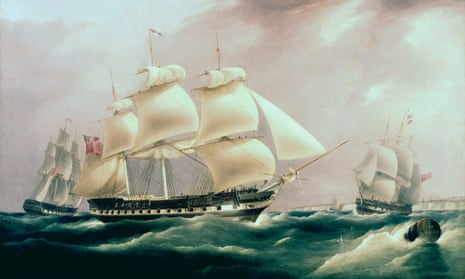Historians and academics have labelled a new government campaign “tone deaf” and “historically illiterate” for using images of ships used for slavery and colonisation to promote Britain’s maritime sector.
The UK has a long history with commercial shipping, reaching as far back as 1700 ⚓️
— Dept for Transport (@transportgovuk) September 10, 2019
Our #Maritime2050 plan maps out the next 30 years of innovation. Find out more 👉https://t.co/VqYPNw300C #LISW19 pic.twitter.com/0Olw3gk2F8
The advertisement by the Department for Transport features ships such as fluyts, the East Indiaman and the steamship, which were used between the 16th and 19th centuries to establish the British Empire, transport slaves and indentured labourers across the Atlantic and bring hauls of valuable goods to Britain.
“This is what happens when the historical memory is limited to a narrative in which we simply abolished slavery – it is remarkably tone-deaf, never mind historically illiterate,” said Kim Wagner, historian and author.
Britain’s commercial shipping enterprise in this period dismantled a thriving Indian ocean exchange of goods and services between the east and west and replaced it with a system in which trade was primarily beneficial to the western world, historian Vinita Damodaran said. “The trade significantly changed. The British ships were no longer carrying fine muslins and calico to Europe. The primary produce brought over was jute, cotton, the sorts of materials used in the emerging British industrial project.”
Priyamvada Gopal, who teaches at the faculty of English at Cambridge University, said that Britain’s history of commercial shipping was “a deeply violent one, which included shipping millions of black and indentured bodies tightly packed in the holds of ships to be exploited on plantations.”
“It is shameful to not acknowledge this in favour of a diffuse and dishonest pride,” Gopal said.
Wagner said that the ad campaign reminded him of a tweet from the Treasury in 2018, which congratulated the British public for contributing to the end of slavery. “Did you know? In 1833, Britain used £20 million, 40% of its national budget, to buy freedom for all slaves in the Empire,” the earlier tweet had said.
“It is a reflection of the pervasive ignorance that goes hand in hand with Empire nostalgia” Wagner said.
A Department for Transport spokesperson said: “The slave trade was an abhorrent practice for which the British government has rightly apologised.
“This tweet was intended to promote the future of Britain’s maritime sector, which accounts for 95% of British trade. Needless to say, we apologise if any offence has been caused.”
